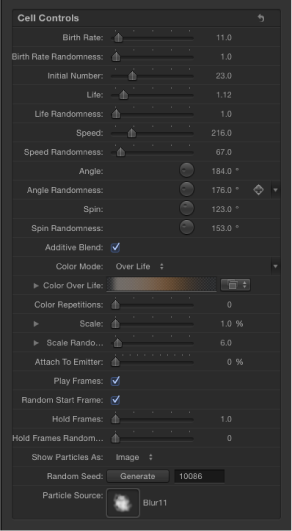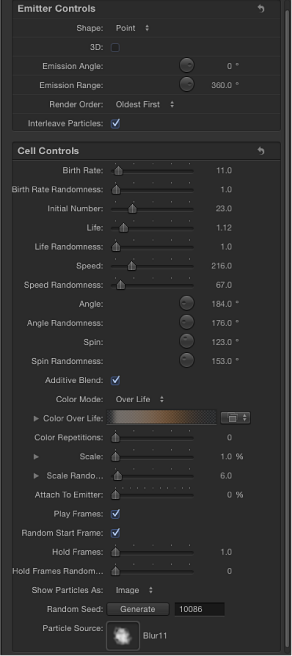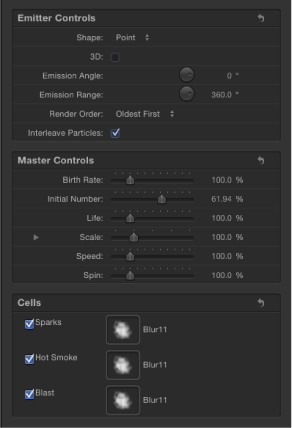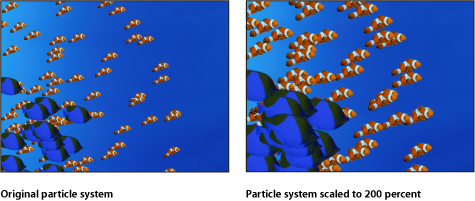The Difference Between Emitter and Particle Cell Parameters
Emitter and particle cell parameters, though closely related, serve different purposes. Emitter parameters control the overall shape and direction of the animated mass of particles generated by the system. Other emitter parameters simultaneously modify the parameters of all cells inside that emitter.
Particle cell parameters control the behavior of particles generated from each cell inside the particle emitter. For more information, see Particle Cell Parameters in the Inspector.
When only one layer is used as a particle cell source, the cell controls appear in the Emitter Inspector as well as in the Particle Cell Inspector. If more than one layer is added to a Particle Emitter, all cell controls appear in the Particle Cell Inspector. To access this Inspector, the cell must be selected in the Layers list or Timeline.
Select an emitter object in the Layers list, Timeline, or Canvas.
In the Inspector, click the Emitter Inspector.
The Emitter controls appear.
The contents of the Emitter Inspector are dynamic—different parameters appear depending on the number of cells in the particle system, the emitter shape that’s used, and whether the 3D checkbox is selected or deselected.
Parameters in the Particle Cell Inspector control the behavior of particles generated by the selected cell, independently of the parameters governing the emitter. In particle systems with multiple cells, each cell has its own parameters. This lets you create particle systems made up of many kinds of particles, each with distinctly different behaviors.
For more information on using the Particle Cell parameters, see Particle Cell Parameters in the Inspector.
Select any cell in an emitter in the Layers list or Timeline.
In the Inspector, open the Particle Cell pane.
The Cell controls appear.

Single Cell Versus Multi-Cell Emitter Parameters
If a particle system has only one cell, the Emitter Inspector displays all parameters for the cell, as well as the emitter’s own parameters. In this case, you can control every aspect of the particle system from this single Inspector, which saves you from going back and forth between the Emitter and Particle Cell Inspectors.

If a particle system has two or more cells, the Emitter Inspector looks much different. The list of parameters is much shorter, and the majority of the cell parameters are replaced with a smaller group of Master Controls (hidden by default).

Changes made using the Master Controls modify the effect of each cell’s parameters relative to the other cells in the system. This means that for a particle system with three cells that have different Scale values, increasing the Scale parameter in the Emitter Inspector multiplies the Scale value of all three cells by the same percentage. This has the result of increasing or reducing the size of every particle in the system, while keeping the size of each particle relative to one another the same.

For this reason, the Master Controls parameters of multi-cell particle systems appear as percentages.